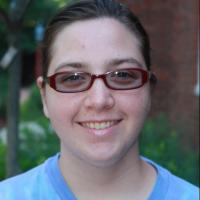Today was my first day at Longwood. I’m working with Kristina Aguilar and her one-year intern, Joshua Willis.
I got assigned to map a 200′ x 200′ quadrant at Longwood Gardens, which was the Theatre Garden and the surrounding area. The Theatre Garden is a formal area that is highly visible to the public (no pressure in identifying, labeling, and mapping the plants at all)!
This garden has a Mediterranean-Californian dry feel to it; it is home to plants like hens-and-chicks, trifoliate orange, and sedum (which, I’ve now learned, that they’ve broken down into 3 different genera: Sedum, Hylotelephium, and Phedimus). The plant beds had been renovated this year; some plant materials were taken out, and others were added. I’ll get the chance to play plant-detective.
Plant records are important. Kristina told me if you don’t have them: you’re not a garden, but a park. Most institutions use BG Base/BG Map; the first being a data base in which you can make accessions (or records) of plants that are being kept in the garden, and the second being a program that is set “on top” of AutoCAD and is used to map the plants in the collection.
Most institutions use BG Base and BG map, but Kristina told me that Winterthur was one of the few that uses its own data base. BG Base is the “brain”; for instance, if it’s alive or dead, if it has been planted, moved to a different location, or removed altogether, how it came to you (plant, cutting, bare root, etc). You can also use this data base to keep track of your plant sources: who you got them from, where you got them. BG Base is also used to export the data to the web.
There’s 3 main tables that I’ll be working in for my project:
- Plants
- Names-which is the largest table within BG Base (it has 10 pages to fill out for data)!
- Accessions
The most important thing to do before you start adding data into the data base is to make sure that the name is accepted. The way to verify this is to check with multiple, current sources. A few of the sources I used today were:
- USDA.gov
- eFlora.org
- GRIN (Germplasm Resources Information Network)
Overall, an overwhelming change from the Mt. Cuba scene! I knew Longwood Gardens was a huge institution when I’ve been a visitor; but being behind the scenes and looking at just the number of Horticulture staff, it really blew me away!
